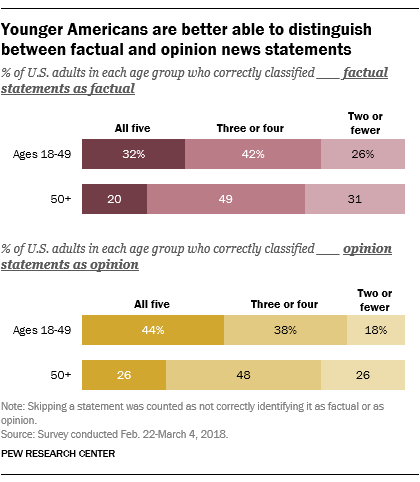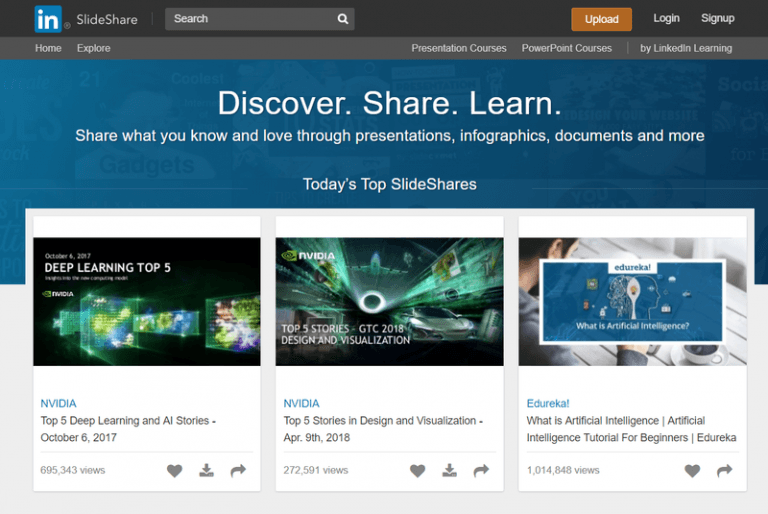According to a new analysis from the Pew Research Center, Americans ages 18–49 were more likely to accurately categorize factual statements as facts and opinion statements as opinions. You can test your own ability here, no matter your age. Read “What is Fake News” at https://guides.libraries.psu.edu/fakenews Fake News: Sources that intentionally fabricate information, disseminate deceptive […]
Younger generations are actually better at telling news from opinion than those over age 50
According to a new analysis from the Pew Research Center, Americans ages 18–49 were more likely to accurately categorize factual statements as facts and opinion statements as opinions. You can test your own ability here, no matter your age. Read “What is Fake News” at https://guides.libraries.psu.edu/fakenews Fake News: Sources that intentionally fabricate information, disseminate deceptive […]
The Death of Microsoft’s LinkedIn’s SlideShare
In 2016, SlideShare had over 70 million unique visitors per day, and it was listed by Alexa as one of the top 100 most visited websites in the world. At its peak, it was such a powerhouse that Obama used the network to post his birth certificate. It also stood for years as a premier […]
Best Social Media Automation Tools to Boost Traffic
What are the Best Social Media Automation Tools to Better Reach My Audience? The internet is chalk full of tools that are useful in this arena. Many sites exist to make your life easier by taking some of the burdensome work off of your shoulders. We’ve compiled a list of the nine best social media […]
Top Technology firms erect shrines to themselves
Many of the nation’s leading technology firms are erecting billion dollar shrines to themselves, while hoarding cash and using the American public to pay the bill. Is big tech robbing the country’s revenues by declaring their intellectual property resides in offshore tax havens ? Are they devaluing the country’s technical labor force by using lower-wage […]



